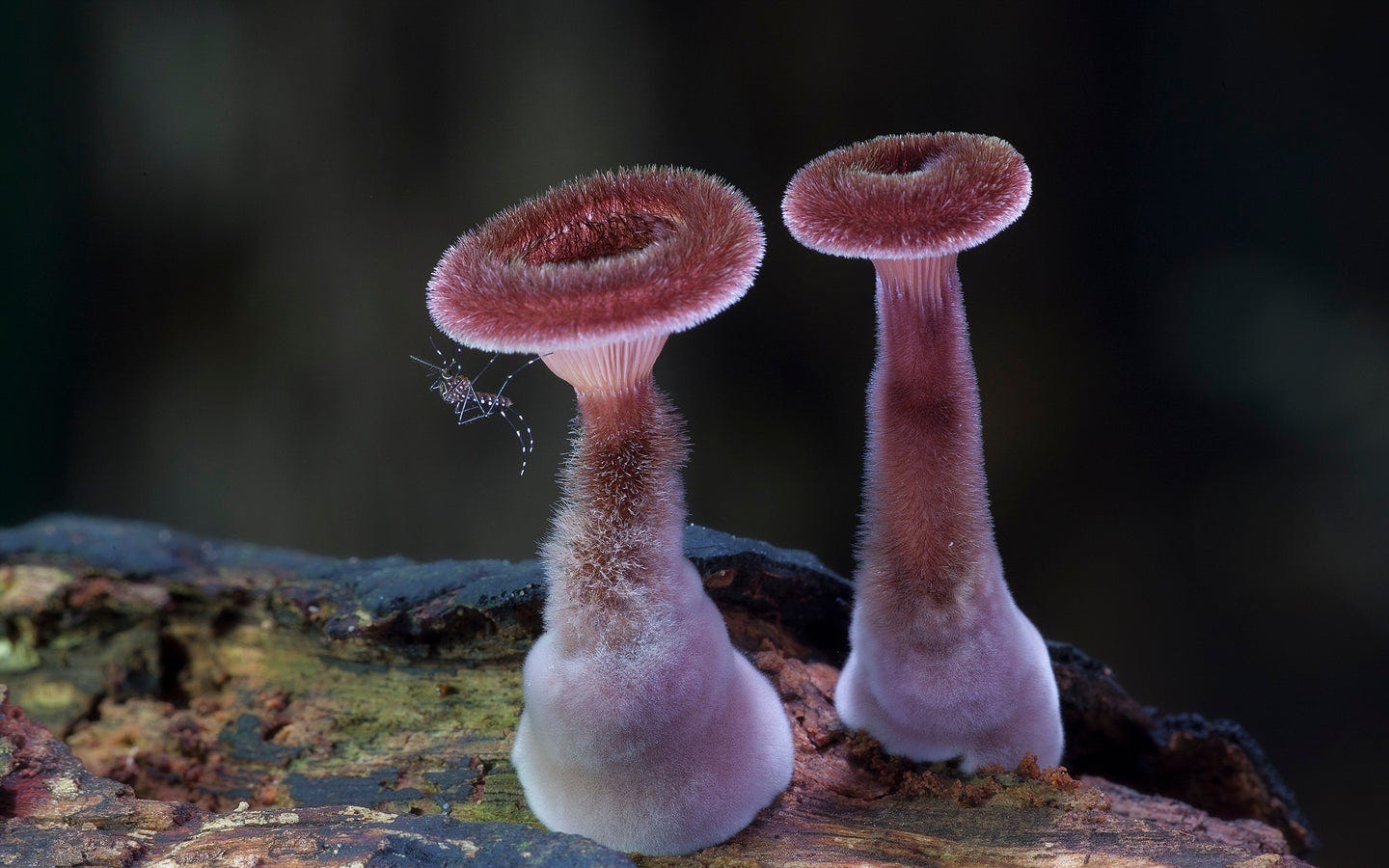Happy Friday, Fungi Friday fam!
We’ve made it to November, the trees are beginning to lose their leaves, deer hunting season is in full swing, and we’re back again with three more featured articles all about mushrooms! So let’s get into them.
Let’s talk about the “F” word
No… not THAT “F” word, silly. The FUNGI “F” word! The fungi kingdom is understudied, but there’s an effort underway to change that. As most are familiar with the kingdom of fauna (animals) and the kingdom of flora (plants), not nearly as many are familiar with the kingdom of fungi. But that seems to be changing…
From entertainment to food — fungi are everywhere. The documentary Fantastic Fungi, has a 100% fresh rating on Rotten Tomatoes and is streaming on Netflix. During the pandemic, the art of raising mushrooms at home boomed. And fungi are being studied for their ability to help cleanup oil spills, create sustainable alternatives to leather, and even treat anxiety and depression.
“We have culturally evolved with fungi over millennia,” says Giuliana Furci, founder of the Fungi Foundation, the first and only fungi-focused NGO. “Wherever we look on Earth, and every civilization that we look into, we see uses of fungi being apparent, either for feeding, healing, clothing, and so much more. The nature-based solutions that fungi hold are overwhelming, and they’re not new discoveries. There are ancient uses in this cultural coevolution that we must go back to.”
This feature covers everything, from the history and complex relationship between humans and fungi to the potential future between humans and fungi. It concludes by finally reaching the main argument that we humans need to find balance between harnessing the incredible abilities of fungi versus touting them as a one-stop fix for the climate and biodiversity crises. There is no simple fix to the problems we face here on Earth, but I think that the final sentence of this feature said it well. “There’s awesome uses of fungi that we can partner with to address harms in our environment, but I don’t think we can just rely on them to do all of the work.” So let’s continue to learn more of what these creatures can offer, as they’re sure to continue to be a key piece of life here on Earth.
The Future of Coffee Looks Psychedelic
Ever wonder what the experience of micro-dosing psilocybin while getting your daily fix of coffee would be like? If so, feature number two of the week is for you.
For those unfamiliar, a micro-dose is a non-psychoactive dose, so there’s no risk of an ego-death inducing trip. Instead, those familiar typically claim feelings of openness, curiosity and energized. To be honest, sounds very similar to other adaptogenic mushroom infused coffees.
This trend is being brought on by companies like Wunderground Coffee and Puff Coffee, from Seattle and Portland respectively. These companies are excited about the prospects of psilocybin infused coffee, as we’ve already proven that plant medicines like psychedelic mushrooms have tons of research supporting their effective use against depression, addiction, and post-traumatic stress disorder. Access to psilocybin could really be a game-changer for those struggling with their mental health.
And the flagship product, while still technically illegal, is using a “grey area” to distribute, as neither of these companies are selling it. They launched a FREE NFT, and 10 lucky winners will be hand delivered their “mush coffee” — as they’ve coined it — by hand via a third party. It’s a planned act of civil disobedience, meant to advocate for expanded rights to access of psilocybin therapy, all in the name of access to mental health therapy that it’s backers claim will be able to help so many!
How truffles took root around the world
For our final feature of the week, let’s learn a bit about the history of truffles. For centuries, the wild delicacy grew only in Europe. But improved cultivation techniques have enabled the pricey, odorous fungus to be farmed in new landscapes.
The truffle has always been shrouded in mystery: For centuries no one knew where it came from. It was not until 1711 that it was classified as a fungus. In the 19th century, it was discovered that truffles associate with tree roots to grow. In recent decades, cultivation techniques for this delicacy have been developed, allowing its expansion around the world. It’s known as a very finicky fungus, needing hundreds of conditions and variables to align to prosper.
If you’re a truffle lover, this article has it all. From its ancient history, dating back to early 1700s to its current day delicacy usage, where a single kilo has gone for as much as $1,350. Truffles are unique among the fungi kingdom in that they are among those that emit the highest amount of volatile organic compounds. More than 200 of these have been identified so far in various truffle species. Both black and white truffles pump out a mixture of alcohols, ketones, aldehydes, dimethyl sulfide, dimethyl disulfide, diacetyl, ethylphenol, furaneol and octenol.
And while these delicacies have been known for over 300 years, they’ve only been able to be cultivated by humans for around 50. And because of this, we still have a long way to go to understand this mushroom and it’s particular development.
Want even more? Here are some other interesting, mushroom focused reads of the week:
As always, thank you for reading this weeks edition of Fungi Friday’s! If you enjoyed what you found, please feel free to forward to friends also interested in the Fungi Community!
And if you were forwarded this post and enjoyed what you found, please subscribe below:



